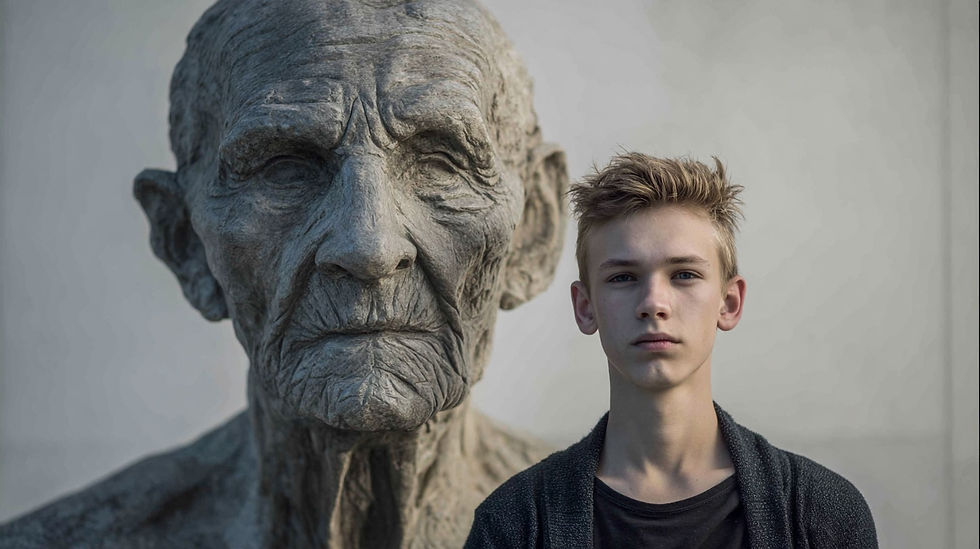Yamanaka Factors: The Anti-Aging Code Hidden in Our DNA
- Mali Arwyn

- 3 hours ago
- 3 min read

The 2012 Nobel Prize in Medicine was awarded to Dr. John B. Gurdon and Dr. Shinya Yamanaka for discovering transcription factors that can turn adult cells back into embryonic cells. (1)
During the 1990s and 2000s there was a great deal of controversy over the fact that human embryos were required for stem cell research. Scientists were using (destroying) surplus embryos created by in vitro fertilization (IVF). (2, 3) Many found this unacceptable.
Dr. Shinya Yamanaka told The NY Times that when he visited his friend’s fertility clinic, he viewed an embryo through a microscope and thought of his daughter. He had been conducting stem cell research for years and decided there had to be better a way. (4)
Dr. Yamanaka and his team went on to isolate four genes that direct cells to return to their embryonic state. In short, they used the factors produced by these genes to create induced pluripotent stem cells (iPSCs). (5) Today, iPSCs are one of the most widely used tools in biology and medicine. They’re used for things like drug testing, disease modeling and toxicity screening. But Yamanaka Factors, sometimes referred to as OSKM, are also being studied for their potential to reverse aging and disease.
Partial Cellular Reprogramming

Creating iPSCs involves fully reprogramming cells. This causes cells to lose their specialized identity. A treated heart muscle cell is no longer a heart muscle cell—it’s more like a blank canvas. The aim of partial reprogramming is rejuvenation without loss of identity. In other words, returning the cell to a younger version of itself. In 2016, researchers at the Salk Institute in California proved that intermittent exposure to Yamanaka factors can reverse the signs of aging. (6)
In this groundbreaking study, scientists tested partial reprogramming on progeria mice. The human version of this disease is called Hutchinson-Gilford progeria syndrome. It’s an extremely rare genetic condition that causes children to rapidly age, with an average life expectancy of 14.6 years. (7) The treated mice not only looked younger, but also had improved cardiovascular and organ function. Most notably, their lifespan was increased by 30%. (6) Since then, many other advances have been made.
In 2020, researchers at Harvard, led by Dr. David Sinclair, used partial cellular reprogramming to reverse glaucoma-related blindness in mice. A few years later, they restored vision in elderly monkeys. (8) In a recent interview, Dr. Sinclair expressed that he had a hard time believing how rapidly progress is now being made. He attributes this to their use of AI, and goes on to say that human testing is planned to begin next year. (9)
Studies have been done involving the regeneration of muscle, heart, liver and brain tissue. (10, 11, 12, 13) Dr. Sinclair says his lab has used partial reprogramming to treat Alzheimer’s disease and ALS (Amyotrophic Lateral Sclerosis, also known as Lou Gehrig's Disease). (9) Many obstacles still exist to mainstream access to this type of anti-aging/restorative medicine. Scientists are working on bringing down cost, increasing accessibility, and ensuring human safety. Hundreds of millions of dollars are being invested by some of the wealthiest people on earth to apply this technology to humans within the next decade. (14)
References
https://www.nobelprize.org/prizes/medicine/2012/advanced-information/
https://www.salk.edu/news-release/turning-back-time-salk-scientists-reverse-signs-aging/
https://podcasts.apple.com/us/podcast/moonshots-with-peter-diamandis/id1648228034?i=1000714570691
https://www.nad.com/news/cellular-reprogramming-age-reversal-technology
Assessed and Endorsed by the MedReport Medical Review Board






